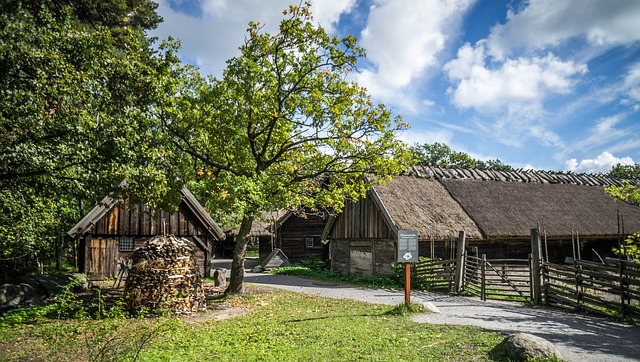Seurasaari Open-Air Museum: An outdoor museum featuring traditional Finnish buildings

In Finland, there is a unique outdoor museum called the Seurasaari Open-Air Museum, where exhibits are displayed outdoors. The museum grounds are filled with traditional Finnish historical buildings, and visitors can feel as if they have stepped back in time to 18th-century Finland.
In this article, I will provide a detailed explanation of the Seurasaari Open-Air Museum, an outdoor museum where you can experience Finnish history. If you are interested in Finnish history and culture, please read on.
Overview of the Seurasaari Open-Air Museum
The Seurasaari Open-Air Museum is a unique outdoor museum located on the island of Seurasaari, just outside the Finnish capital of Helsinki. The island itself is accessible all year round, but the museum is open only during the summer season (mid-May to mid-September).
The museum features 87 traditional houses that were actually used in Finland from the 18th to the 19th centuries. The Seurasaari Open-Air Museum was founded in 1902 by Professor Haikel, who specialized in Finnish folk art, to preserve Finland’s fading culture and history for future generations. As the name suggests, all exhibits at the museum are displayed outdoors, creating an open and spacious atmosphere.

There is a short bridge connecting the Finnish mainland to the island. Visitors can purchase tickets and enter the museum after crossing the bridge. Although it is an island, it is not very large, and you can easily walk around it in about an hour.
The Seurasaari Open-Air Museum, where visitors can directly experience the lifestyle of Finnish farmers 200 years ago, has become a popular spot for Helsinki residents and tourists to immerse themselves in history and nature.
Displaying 18th-19th century traditional houses

The Seurasaari Museum showcases actual houses built from the 18th to the 19th centuries, which have been relocated from all over Finland. Although the buildings on display were all built around the 18th century, they were restored during the relocation process and are in good condition.
A wide range of historical buildings, from residential houses to churches and livestock sheds, can be found on the museum grounds.

Additionally, museum staff dressed in traditional Finnish costumes offer guided tours of the facilities. The museum faithfully reproduces the way of life in Finland at the time, allowing visitors to enjoy the sensation of truly walking through 18th-century Finland.
The natural beauty of Seurasaari Island is also a must-see
Seurasaari Island is registered as a national park in Finland. Therefore, in addition to the open-air museum, Seurasaari Island is filled with lush forests, beautiful sandy beaches, and other natural features. The entire island is a nature park, home to various wildlife such as squirrels and swans.
In this way, Seurasaari Island, including the summer season when the open-air museum is open, serves as a relaxing destination for Helsinki residents to enjoy swimming and picnics throughout the year. The atmosphere of the facility is not that of a stuffy museum for learning history but rather a nature park where families can enjoy spending time together in an open space.
In Finland, the Midsummer Festival (Juhannus) is held annually at the beginning of summer. During this period, many people return to their hometowns to spend time with family and friends, leaving the city of Helsinki relatively quiet.
Therefore, the Seurasaari Open-Air Museum hosts a Midsummer Eve celebration, which is open to Helsinki residents who remain in the city. At the celebration, people gather around a traditional bonfire called “Kokko” to ward off evil spirits in a ceremony, and the event is filled with singing and dancing.

Conclusion
The Seurasaari Open-Air Museum is located on Seurasaari Island, west of the Finnish capital, Helsinki, and is open only during the summer season.
Within the facility, 87 traditional buildings are on display, allowing visitors to catch a glimpse of the lives of Finns from the 18th to the 19th centuries.




